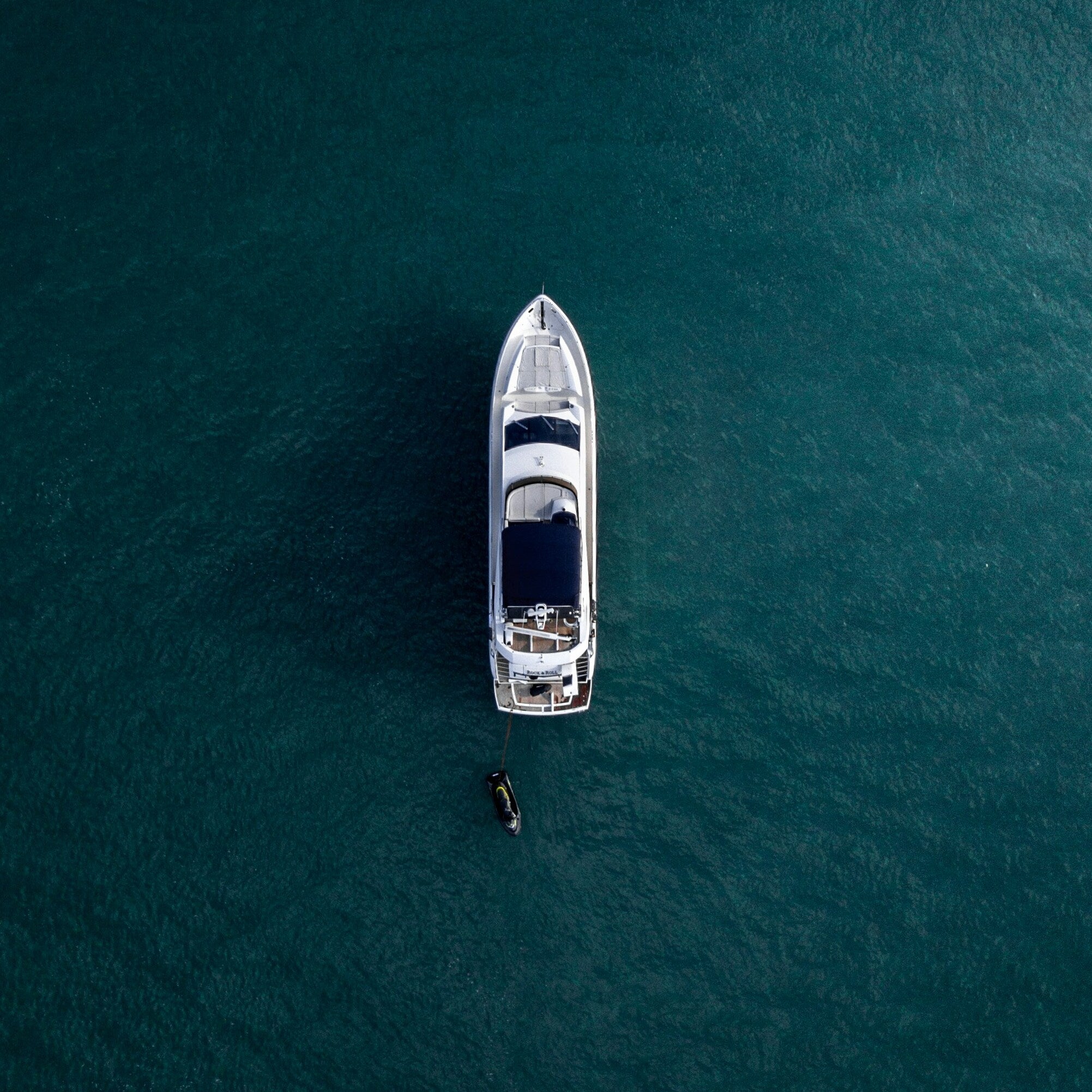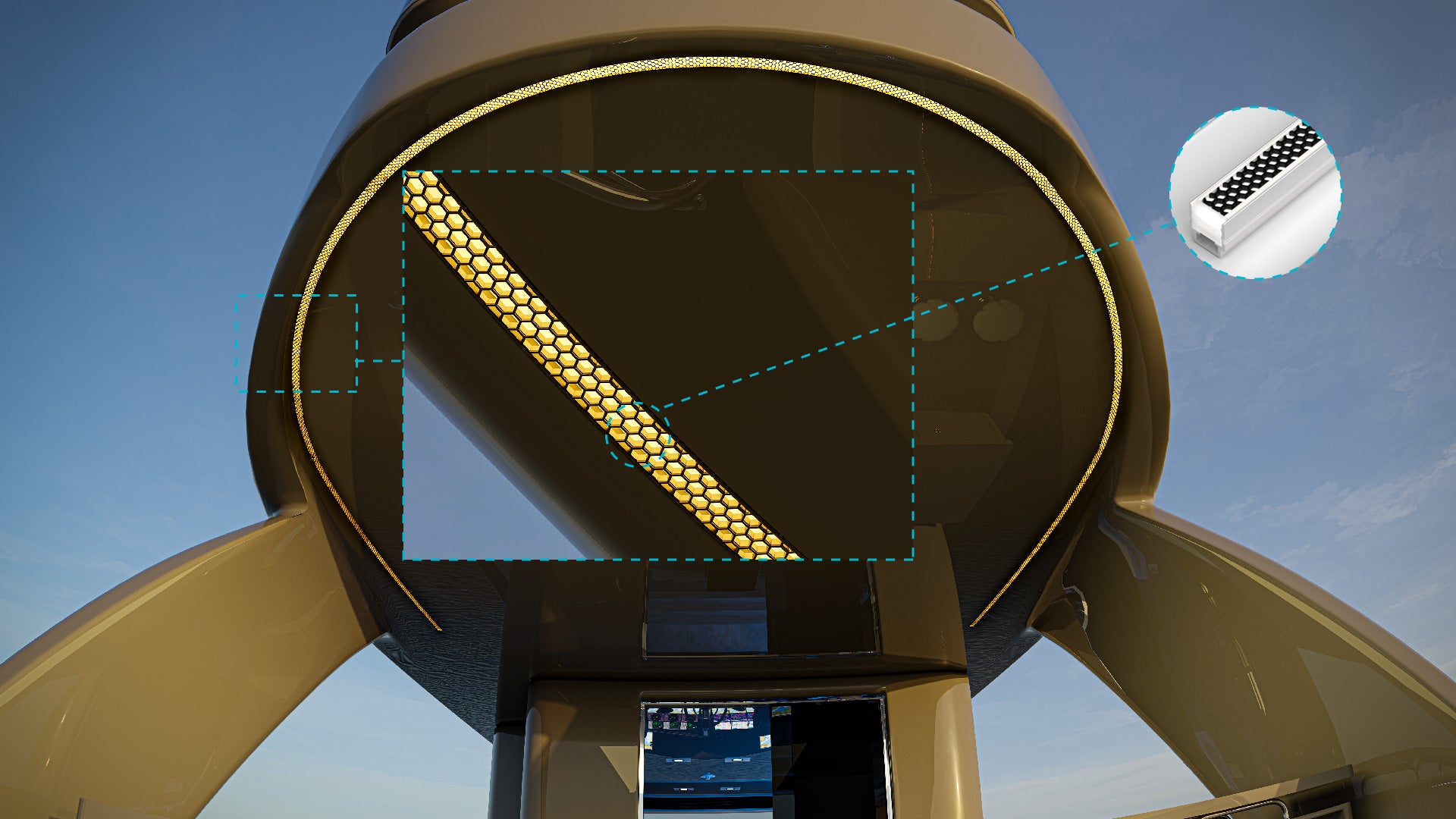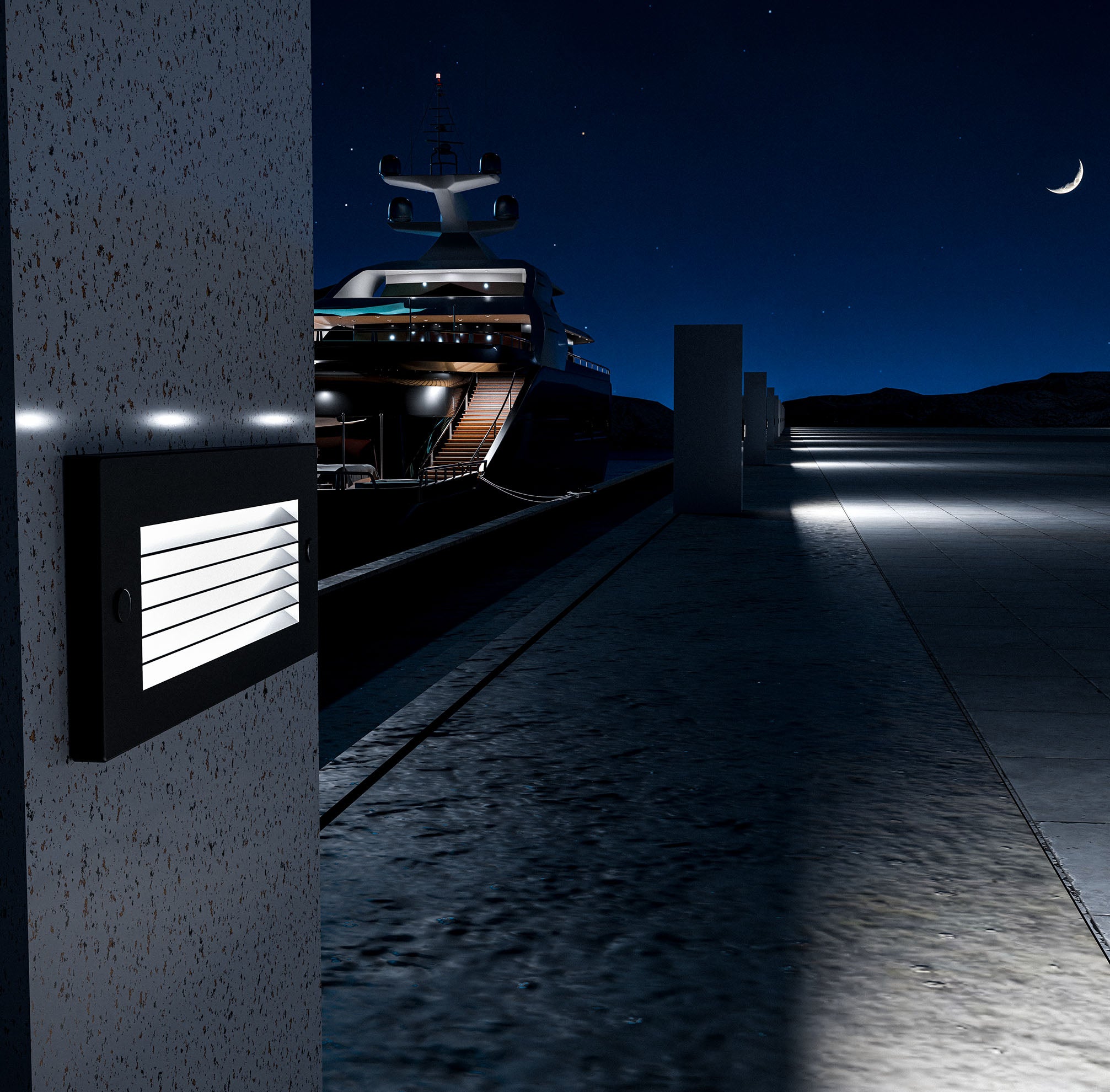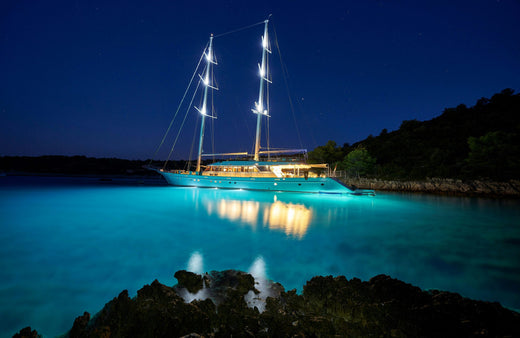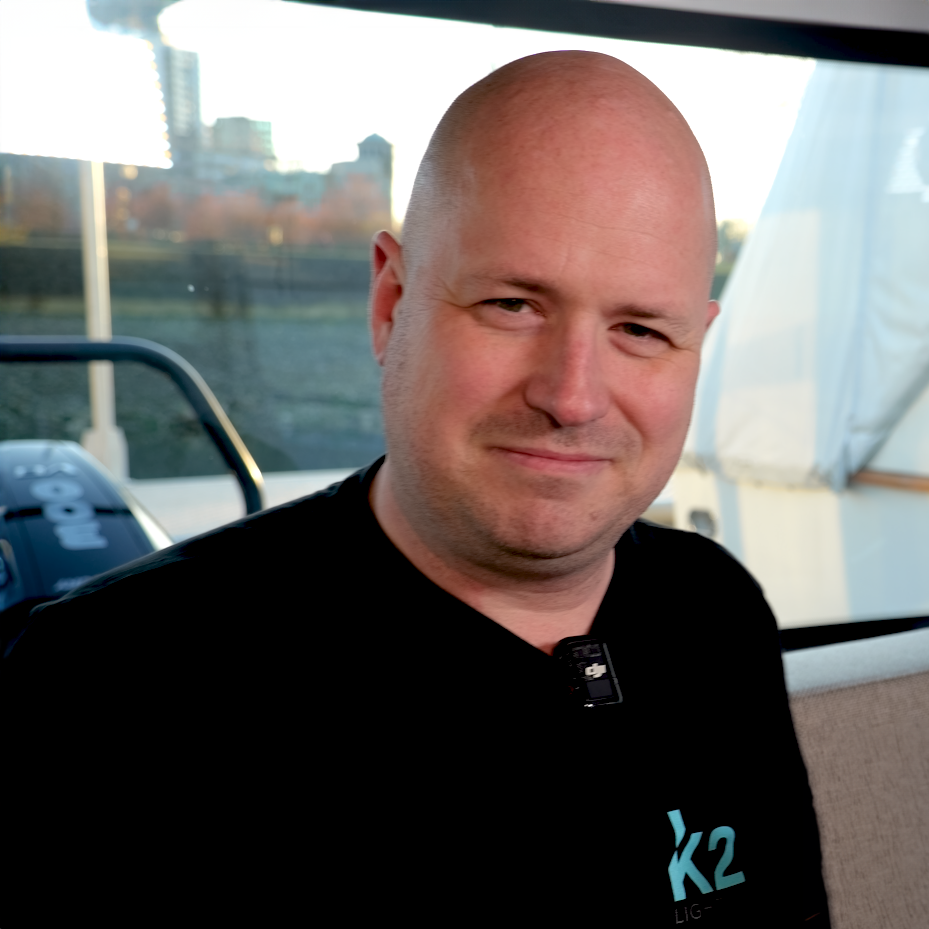In the vast and dynamic world of marine navigation and aesthetics, the choice of lighting between Marine LED Lights vs Halogen Lights can profoundly impact both the functionality and ambiance of maritime vessels.
The significance of selecting the appropriate lighting technology for marine environments cannot be overstated. The right choice enhances visibility, ensures compliance with safety regulations, and contributes to the overall experience aboard. Moreover, it plays a crucial role in energy consumption and maintenance needs, factors that are critically important in the harsh conditions at sea.
This blog post aims to shed light on two prevalent lighting technologies in the marine world: Marine LED lights vs Halogen lights. While both have their applications and merits, our focus will be on delineating their characteristics, advantages, and limitations, with a particular emphasis on the superiority of LED lighting for marine use. Through this comparison, we endeavor to provide valuable insights that will assist maritime professionals and enthusiasts in making informed decisions about their lighting solutions, leaning towards the innovative and sustainable advantages that LED technology offers.
Understanding Marine Lighting
Marine lighting encompasses the range of lighting systems and solutions specifically designed for use in marine environments. These lighting solutions are engineered to withstand the harsh conditions at sea, including saltwater corrosion, extreme weather, and constant vibration. The primary purposes of marine lighting are threefold: ensuring the safety of all aboard by illuminating navigational paths and potential hazards, aiding in the navigation of vessels, and enhancing the aesthetics of the watercraft, thereby enriching the overall maritime experience.
In the diverse sphere of marine applications, two types of lighting stand out due to their widespread use and distinct characteristics: LED (Light Emitting Diode) and Halogen lights. LED lighting is renowned for its efficiency, durability, and versatility, making it a popular choice in modern marine applications. On the other hand, Halogen lights, known for their luminous output and initial cost-effectiveness, have traditionally been a go-to option for many maritime professionals and enthusiasts.
Halogen Lights in Marine ApplicationsHalogen lights operate on a simple principle: they house a filament (usually tungsten) within a bulb filled with halogen gas. When electricity is applied, the filament heats up to a high temperature, emitting light. The presence of halogen gas increases the efficiency of the light output and prolongs the life of the filament, compared to traditional incandescent bulbs.
Pros of Using Halogen Lights in Marine Environments:
Initial Cost
One of the most attractive aspects of Halogen lights is their affordability. The initial investment is relatively low, making them an accessible option for many boat owners and operators.
Brightness
Halogen bulbs are known for their intense brightness and warm light, which can be particularly advantageous for certain applications on board.
Cons of Halogen Lights:
Longevity
Despite the halogen gas improving the lifespan of the filament compared to incandescent bulbs, Halogen lights still fall short in terms of longevity when compared to LEDs. This means more frequent replacements, adding to maintenance time and costs.
Energy Consumption
Halogen lights are less efficient than LED lights, consuming more power to produce the same amount of light. This can lead to increased energy costs and a higher demand on the vessel’s power systems.
Heat Emission
The high temperatures Halogen bulbs reach during operation not only pose a risk of burns upon direct contact but also contribute to the heating of onboard spaces, potentially affecting comfort and safety.
Environmental Impact
Halogen bulbs' shorter lifespan and higher energy consumption contribute to a larger environmental footprint. More frequent replacements mean more waste, and higher energy use translates to greater emissions, especially if the vessel's power comes from fossil fuels.
The Rise of LED Lights in Marine Applications
The evolution of lighting technology has led to the widespread adoption of LED (Light Emitting Diode) lighting in various sectors, with the marine industry being no exception. LEDs represent a significant advancement over traditional lighting solutions, offering superior performance and adaptability under the rigorous demands of marine environments. This shift towards LED technology is driven by its numerous advantages, which cater not only to the functional needs of marine lighting but also to environmental and safety considerations.
Introduction to LED Technology and Its Adoption in Marine Lighting
LED technology operates through the movement of electrons in a semiconductor material, emitting light when the electrons interact with photons. This process is highly efficient and produces minimal heat compared to traditional lighting methods. In marine applications, LED lights have quickly become the preferred choice, owing to their robustness, efficiency, and versatility. The adoption of LED technology in this sector underscores a commitment to innovation, sustainability, and enhanced operational performance.
Detailed Benefits of Using LED Lights Over Halogen
Energy Efficiency and Lower Power Consumption
LEDs require significantly less power to operate than Halogen bulbs, translating into lower energy costs and reduced strain on the vessel’s power systems. This efficiency is particularly beneficial in marine settings where energy conservation is crucial.
Longer Lifespan, Reducing the Need for Frequent Replacements
LED lights boast a remarkably longer lifespan compared to Halogen lights, often lasting tens of thousands of hours before needing replacement. This longevity reduces maintenance efforts and costs, ensuring reliable lighting over extended periods.
Better Durability and Resistance to Harsh Marine Conditions
Engineered to withstand the rigors of the marine environment, LED lights are resistant to shock, vibration, and moisture, attributes that are essential for durability at sea. Their solid-state construction makes them less likely to fail under the mechanical stresses encountered on water.
Improved Safety Due to Lower Heat Emission
LEDs emit very little heat, minimizing the risks of burns and fire hazards aboard the vessel. This characteristic not only enhances safety but also contributes to a more comfortable environment by reducing additional heat sources.
Enhanced Light Quality and Customization Options
LED technology offers superior control over light quality, including brightness levels and color temperature, allowing for customization to suit specific needs and preferences. Furthermore, LEDs can be designed to emit light in a specific direction, improving efficiency and effectiveness in lighting targeted areas without the need for reflectors or diffusers.
Making the Switch to LED
When comparing Marine LED Lights vs Halogen lights, transitioning from traditional Halogen to LED lighting in marine environments represents not just a shift in technology but a strategic upgrade to more sustainable, efficient, and safer lighting solutions. K2 Lighting is dedicated to guiding vessel owners through this transformative journey, ensuring a seamless and beneficial transition that aligns with their unique marine lighting needs.
Guidance on Evaluating Marine Lighting Needs:
Assess Current Lighting Performance
Begin by evaluating the performance of your existing Halogen lighting systems, considering aspects like brightness, energy consumption, and maintenance frequency.
Identify Lighting Objectives
Define what improvements you seek with an upgrade to LED—whether it's enhanced brightness, reduced energy costs, longer lifespan, or better durability.
Understand Marine Conditions
Consider the specific conditions your lighting system must endure, such as saltwater exposure, vibrations, and extreme weather, ensuring your chosen LED solutions are up to the task.
Consult with Experts
Leverage the expertise of marine lighting professionals at K2 Lighting to select the optimal LED solutions that meet your operational requirements and budget.
Long-term Cost Savings and Environmental Benefits
Switching to LED technology offers significant long-term financial and ecological advantages. Initially, the investment in LED lighting may be higher than Halogen, but the efficiency and longevity of LEDs result in lower energy bills and fewer replacements over time, offering considerable savings. Environmentally, LEDs contribute to a smaller carbon footprint due to their lower energy consumption and reduced waste from less frequent replacements. By adopting LED lighting, marine operators not only save on operational costs but also partake in global efforts to preserve our oceans and environment.
Explore the future of marine lighting with K2 Lighting's comprehensive range of LED solutions. Our innovative, high-performance LED lights are designed to meet the rigorous demands of the marine environment, offering superior efficiency, longevity, and environmental benefits. We invite you to contact us or visit our website to discover how K2 Lighting can illuminate your marine journey with cutting-edge LED technology.
LED lighting stands as the superior choice over Halogen for marine applications, offering unmatched performance, efficiency, and sustainability. The benefits of Marine LED Lights vs Halogen technology extends beyond operational improvements to include significant environmental contributions, aligning with the global movement towards eco-friendly practices.
At K2 Lighting, we are committed to leading the charge in this new era of marine lighting, providing innovative LED solutions that cater to the evolving needs of the maritime community. Our expertise and dedication to quality ensure that our customers receive the best lighting solutions available, enhancing safety, functionality, and aesthetics aboard their vessels.
We welcome you to join us in this journey towards a brighter, more sustainable marine future. Contact K2 Lighting today to learn more about our LED lighting solutions and how we can assist in elevating your maritime operations. Let's navigate the waters ahead with the clarity, efficiency, and reliability of K2 Lighting’s LED technology.

